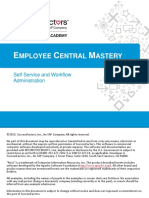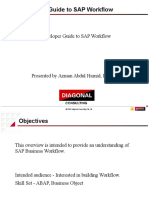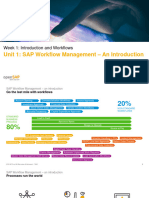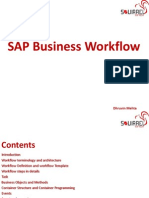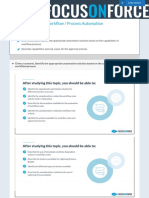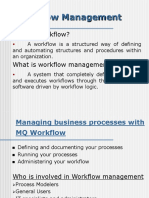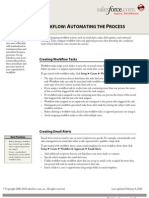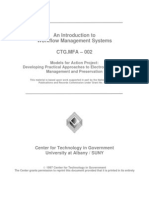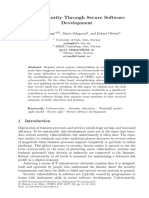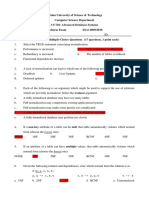0% found this document useful (0 votes)
84 views16 pagesConfiguring Workflows During Implementation
This document outlines the configuration and administration of workflows during implementation, detailing the roles of approvers, contributors, and CC participants. It explains how to create dynamic roles and groups, manage workflow notifications, and utilize features like skipping approvers and delegation. Additionally, it provides guidance on customizing workflows, tracking requests, and setting reminders for approvers to ensure efficient workflow processing.
Uploaded by
a purejoyCopyright
© © All Rights Reserved
We take content rights seriously. If you suspect this is your content, claim it here.
Available Formats
Download as DOCX, PDF, TXT or read online on Scribd
0% found this document useful (0 votes)
84 views16 pagesConfiguring Workflows During Implementation
This document outlines the configuration and administration of workflows during implementation, detailing the roles of approvers, contributors, and CC participants. It explains how to create dynamic roles and groups, manage workflow notifications, and utilize features like skipping approvers and delegation. Additionally, it provides guidance on customizing workflows, tracking requests, and setting reminders for approvers to ensure efficient workflow processing.
Uploaded by
a purejoyCopyright
© © All Rights Reserved
We take content rights seriously. If you suspect this is your content, claim it here.
Available Formats
Download as DOCX, PDF, TXT or read online on Scribd
/ 16




